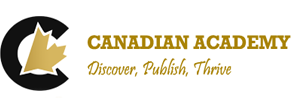A concussion is a sudden, temporary change in consciousness caused by traumatic biomechanical forces impacting the brain, either directly or indirectly (Khurana and Kaye, 2012). Sport-related concussions (SRCs) have become a growing concern, particularly in soccer, which has higher concussion rates compared to other sports (Pierpoint and Collins, 2021). For example, NCAA soccer athletes have concussion rates of 0.28 (men) and 0.41 (women) per 1000 game exposures, higher than in sports like wrestling, basketball, and gymnastics (Hootman et al., 2007). A 2020 study reported a concussion incidence of 1.19 per 1000 game hours in soccer (Vedung et al., 2020).
Research from Scotland (2019) and Sweden (2023) found former elite soccer players are more likely to die from neurodegenerative diseases due to concussions and repetitive heading (Mackay et al., 2019; Ueda et al., 2023). Media reports have highlighted ex-soccer players developing neurodegenerative diseases and taking legal action against associations for brain injuries (PA Media, 2020). This has increased scrutiny on the effectiveness of current concussion protocols.
The Concussion in Sport Group (CISG), established in 2002, focuses on evaluating, managing, and preventing SRCs. Their recommendations are endorsed by major sporting bodies, including FIFA (Patricios et al., 2023). The 2016 Berlin conference led to a 2017 consensus statement, which various sports organizations have used to develop their own protocols (McCrory et al., 2017). However, these implementations were not soccer-specific (Davis et al., 2020; Scullion and Heron, 2022). This study aims to compare SRC guidelines from different soccer associations to assess adherence to CISG recommendations and identify discrepancies to improve concussion protocols and reduce long-term risks for athletes.
This scoping review followed the PRISMA guidelines (Moher et al., 2009) to summarize the similarities and differences between various SRC guidelines. Eligible guidelines were published by official soccer associations, based on the 2017 CISG consensus, and publicly accessible. Excluded were guidelines from non-official associations or those not specific to soccer. Searches were conducted via Google, PubMed, and Google Scholar to identify suitable guidelines, with PubMed providing extensive biomedical literature coverage and Google Scholar serving as a supplementary tool. Search terms included combinations like “football AND concussion guidelines” and “soccer AND return to play” to cover regional terminologies. The review aimed to find guidelines, assessment tools, and relevant articles on sports-related concussion in soccer.
Several soccer-leading nations, such as Brazil, France, Germany, and Spain, lack specific concussion management guidelines from their football associations. While Germany’s DFB references external guidelines on traumatic brain injuries, they are not specific to soccer. Some associations, like Argentina’s, use FIFA’s concussion protocol. FIFA endorses the SCAT-5 tool, but its limited language availability restricts its global use.
The SCAT-5 is recognized as the primary tool for sideline concussion assessments, designed for medical professionals, while the CRT-5 is for general use. Guidelines reviewed often lack specifics on these tools, with varying detail on recognizing red flag symptoms. FIFA provides comprehensive symptom details, including additional ‘orange flags’ for less severe symptoms.
There are inconsistencies regarding same-day return-to-play after a suspected concussion. Some guidelines allow it with medical clearance, while others do not. Studies indicate that immediate removal from play leads to better outcomes. Professional and amateur levels show different adherence to protocols, influenced by soccer’s economic pressures.
Current guidelines suggest using neuroimaging to rule out severe brain injuries but do not specify the types. Advanced neuroimaging shows promise in detecting structural changes post-concussion, but more research is needed before routine implementation.
Discrepancies exist in the recommended rest period after a concussion, ranging from 24 hours to 14 days. Studies suggest that light physical activity aids recovery more than extended rest. Guidelines lack clarity on progressing through the recovery stages, particularly around the term “completely asymptomatic.”
Adolescents and female athletes face unique challenges in concussion management. Some guidelines have separate protocols for adolescents, but none specifically address female athletes, who are at higher risk and have longer recovery times. Further discussion is needed on tailored protocols.
There is a lack of education on risk reduction strategies, except for US Soccer. Neck strengthening exercises could reduce concussion risk. Baseline testing is becoming more common but is inconsistently recommended. It could aid in diagnosing and monitoring recovery.
Current guidelines could benefit from including more details on persistent post-concussive symptoms and risk reduction strategies. Standardized guidelines could improve efficiency in managing concussions, though some customization may be necessary for individual cases.
This scoping review identified inconsistencies in soccer-specific concussion guidelines from various official bodies, particularly regarding return-to-sport timelines, initial rest periods, and same-day return-to-play decisions. These discrepancies may lead to varied management of athletes, potentially causing overly extended rest or premature returns to play. Such differences could also increase the risk of poorer neurocognitive outcomes, especially for amateur athletes lacking individualized management plans. The impact of these discrepancies on athletes remains unclear due to limited studies. Soccer, being widely popular, makes concussion management a significant issue. The recent 2022 CISG update, published in 2023, offers new strategies and tools, presenting an opportunity for harmonized and updated guidelines in soccer.
Source:
 Canadian Academy Discover, Publish, Thrive
Canadian Academy Discover, Publish, Thrive